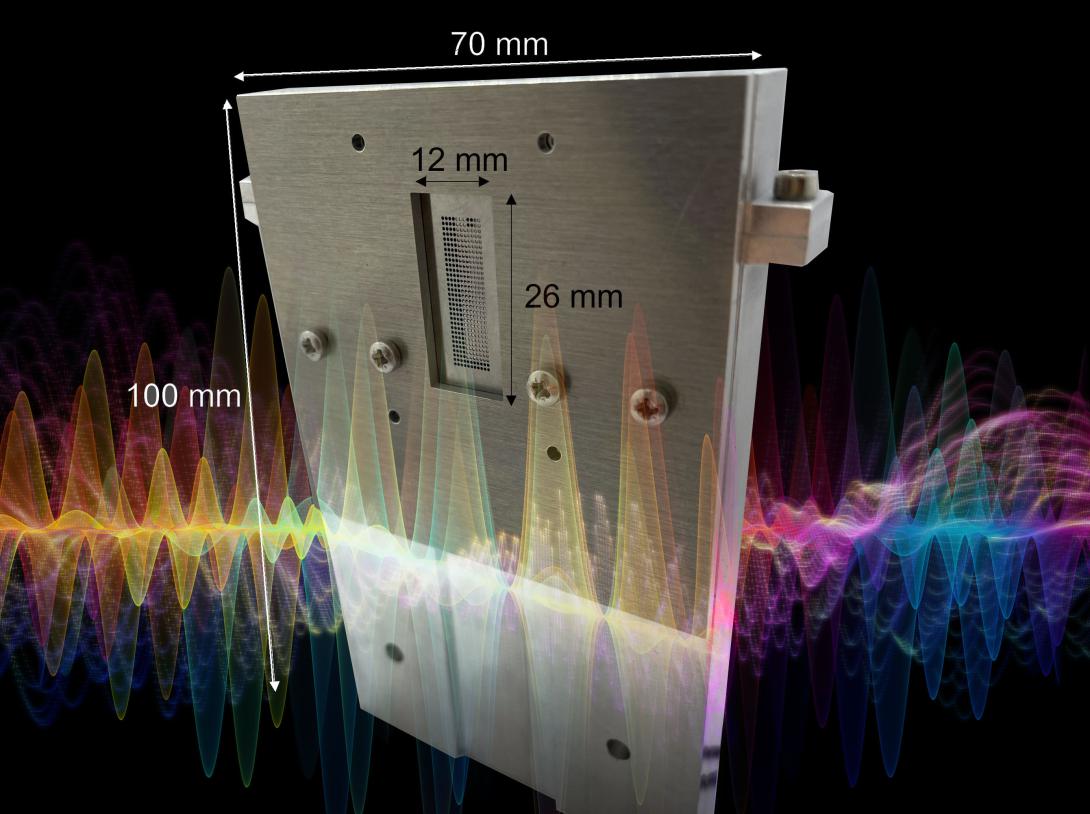New Beam-Steering Antenna Opens Rarely Used Spectrum
Within a few years, researchers at the United Kingdom’s University of Birmingham could provide a new beam steering antenna usable with ultra-high radio frequencies that may be critical to future generations of wireless technologies.
The antenna increases data transmission for wireless technologies beyond fifth-generation (5G) and opens up a range of frequencies largely inaccessible today, according to a University of Birmingham press release. The researchers have demonstrated improvements in data transmission efficiency at frequencies ranging across the millimeter wave spectrum, specifically those identified for 5G and 6G, where high efficiency is currently only achievable using slow, mechanically steered antenna solutions.
For 5G millimeter-wave applications, prototypes of the beam steering antenna at 26 gigahertz (GHz) have shown unprecedented data transmission efficiency, and the device is fully compatible with existing 5G specifications that are currently used by mobile communications networks, the press release added.
The device targets frequencies between 20 GHz and 300 GHz, which so far are only lightly used around the world but will likely see higher demand in the coming years, according to James Churm, research fellow, School of Engineering, University of Birmingham.
Europe, the United States and Korea have established millimeter wave standards for up to about 100 megahertz (MHz) for 5G and up to about 300 MHz for 6G, Churm noted. “Those frequencies are beginning to be used and will be much more used in the next couple of years. As we move more into 5G, we will need to start using those frequencies more and more.”
Beam steering antennas offer a number of advantages and are becoming more ubiquitous with the rapid expansion of mobile communication devices. The antennas form narrow directional beams that can be electronically steered toward an intended target for either transmission or reception. They improve efficiency, reduce interference and save power.
Churm cited multiple scenarios that can create interference at ultrahigh frequencies with more conventional technologies: a large truck parking in front of a user on a park bench, or the wind, or even a bird, moving one of two antennas placed at far-away base stations.
“At the millimeter wave—between 30 GHz and 300 GHz—you’re always contending with the fact that the atmosphere is absorbing a lot of the signal that you’re trying to send out, which traditionally means you don’t get to send much energy in any particular direction. In order to get around this, we focus the energy that we’re trying to send into a very tight beam so that we can cut through the attenuation,” he explained. “That means you’ve got a very tight beam now looking at a user receiving a signal. So, if the user moves out of that signal, the link is lost.”

There are no other technologies in the world that can claim to be able to do that with the same efficiency that we can. It opens up the entirety of the millimeter wave in an efficient way.
Beam steering or beam scanning systems, however, can follow users as they move. “If we have antennas that have beam scanning built within them, we can stop that link being lost. We can follow the user as they move around to maintain the communications link. That’s one of the major benefits of beam scanning technology,” he added.
Beam steering antennas can deliver packets to one user, and switch to a second user and back again without either person noticing a dropped link. “You could do that again and again and again. Both users could move and the antenna would be able to reacquire them,” Churm added.
Another challenge at extremely high frequencies is that traditional diodes simply do not work well. “In most electronics we rely on diodes to do most of the heavy lifting, but as you go into these frequencies, diodes no longer work properly. That’s been known for a very, very long time,” Churm offered.
The yet-to-be-named device created by Churm and his colleagues is about the size of an iPhone, is known as a leaky-wave antenna, is made up of layers of metamaterials and has achieved unprecedented efficiency rates—94% at 300 GHz. Additionally, it can be adapted for use in vehicle-to-vehicle, vehicle-to-infrastructure, satellite communications and vehicular radar, which could make it useful for next-generation automotive, radar, space and military applications.
“The great thing about our technology is that we can scale it and keep scaling it up and all the way to 300 gigahertz—we already have a prototype at 300 gigahertz—and possibly beyond,” Churm said. “There are no other technologies in the world that can claim to be able to do that with the same efficiency that we can. It opens up the entirety of the millimeter wave in an efficient way.”
The metamaterials include a top layer with a partially reflective surface that allows certain parts of the wave to pass through while reflecting other parts. Below that is an air cavity, then a high-impedance layer that helps control the wave’s phase, and a reflective ground plane that reflects all radiation.
It also includes a piezoelectric actuator to alter the distance between the cavity and the other layers. “We bounce that signal off that ground plane and it interacts with all the other metamaterials to get the desired result. Now, what we are doing is attaching that ground plane to a piezoelectric actuator, and simply moving it up and down so it gets closer to and further away from the rest of the structure,” Churm elaborated.
The process essentially changes the properties of the millimeter wave radiation. “In doing that, we are changing the flight of the wave and therefore the properties that we can impart on it. What we’ve designed is this system by which we can move that ground plane a very small amount—it’s quite fast still—and we get this beam steer out of the top.”
The technology also eliminates complex phased array antenna technology. Phased arrays require multiple antennas with “feeding lines” and elements that can be programmed to delay the frequency wave as it passes through. The process creates inefficiencies and signal loss. And if thousands of elements are used, that loss is multiplied thousands of times. “Now, for us, we have a single feed embedded within our structure, so we only get that loss once instead of thousands of times over. And because we’re only changing one element as opposed to thousands of elements, it makes our structure much more simple to tune, which reduces the complexity of the entire system, and reduces the cost,” Churm asserted.
In addition to Churm, the research team includes Muhammad Rabbani, research fellow in millimeter-wave wireless technologies, and Alexandros Feresidis, who heads the Metamaterials Engineering Laboratory at the University of Birmingham. The research has been primarily funded through the United Kingdom’s Engineering and Physical Sciences Research Council under a project known as MILLImeter-wave Broadband ANtennas, or MILLIBAN.
The group has filed for a patent and is actively seeking commercial investors in the technology. With the right partnership in place, the technology could conceivably be available very soon. “If we had an engaged and onboard partner and it turns out our current prototypes are not too far off what’s required in their application, then we could see these things being a made within about two years, something like that,” Churm indicated. “But this is obviously highly contingent on the right partner and us not having to modify our technology too much—which we might have to do, depending what the winning application comes out to be.”
The team has had discussions with an array of companies, but so far none are ready to “tackle the millimeter wave problem just yet,” Churm suggested. “We’re after partners who are closer to having issues with the millimeter wave and are actually trying to exploit it now rather than in a few years’ time.” Additionally, it should be possible for foreign governments to provide funding if they choose to.
The group recently received internal funding from the University of Birmingham to improve the system’s scanning ability. So far, it is able to scan only in one direction—either up and down or side to side. “The challenge is getting controllable what we call phase profile in both planes. As long as we can control the phase in both planes, we can do that, but with our current technique if we change the phase in one plane, it will also change in the other plane,” Churm reported. “We’re trying to work on some geometry that will compensate for that as we go along. We think we’ve got an idea, but it’s not tested yet.”
It will not be long, Churm suggested, before society will be forced to adopt new radio frequency technologies. In his estimation, the communications industry will have to use the higher frequencies. “And we’re going to find out in a bit of a shock that the traditional methods just won’t work if we try to push them harder. We need to be focusing as an industry on finding viable communication hardware solutions for 5G millimeter wave now so that we don’t get into a situation where user demand exceeds the ability of assets providers are able to provide,” he predicted.
Most likely, that forced transition will happen in waves, he warned. “The legislation and the demand are already starting to creep over the technology’s ability to provide. As we transition into relying on 5G services over the next two or three years, these bands will become much more important. Certainly, over the next 10 years when we need much higher frequencies, we’re going to hit a hard wall there, and we’re going to have to rethink our entire architecture. There are multiple stages at which we hit problems over the next three, five and 10 years.”





Comments